By Carroll Parrott Blue, Guest Editor
University of Houston Research Professor Center for Public History
“Home: A place that provides access to every opportunity America has to offer.” – Anita Hill, Reimagining Equality: Stories of Gender, Race and Finding Home, epigram.
In the 1970s some Houstonians greeted integration’s promise of greater access to educational equality with enthusiasm. This reaction was in part because integration also meant improved employment and housing opportunities for Houston’s African Americans, Latinos, and women. As better-equipped schools, higher paying jobs, and housing became available, Third Ward’s boundaries expanded east, west, and south. Some call this larger area the Greater Third Ward, others claim the area as Southeast Houston, and still others declare that Third Ward’s boundaries are wherever you see colored people. Today this ever-growing land base has over 22,000 ethnically diverse residents, nine active civic clubs, and multiple community names like Old Spanish Trail / South Union, Palm Center, Super Neighborhood 68, South Park, Scott Terrace, Foster Place, MacGregor Trails, and Riverside Terrace, among others.
This area stretches south from Wheeler Street bordering Texas Southern University and the University of Houston, east to Spur 5, west to Highway 288 and south to Loop 610. The borders overlap as they spread south into Sunnyside, a semi-rural African American community; west into the ever-expanding Medical Center; and east into Wayside. Today, Latino families, the newest arrivals, are beginning to displace the now aging African Americans who, in the 1970s, settled into the area’s modest homes with spacious yards left behind by whites fleeing integration.
The University of Houston’s Center for Public History, which includes the Welcome Wilson Houston History Collaborative, has a long-term commitment to local studies. For almost thirty-five years, Houston History magazine and its predecessor the Houston Review: History and Culture of the Gulf Coast have published articles that reveal the impact of urbanization, with its constant shifting of living patterns over time.
The articles in this issue illustrate the process of change over the 175 years from the 1840s to the present. The revealing stories about Palm Center, the Kuhlmann Family, Kuhlman Gully, MacGregor Park and its Homer T. Ford Tennis Center, Overseer R. L. Braziel, and METRO’s Purple Line premiere reflect the ethnic footprints left to us by the area’s residents. These articles also illustrate the many ways that the different ethnic groups have searched for home, place, and community.
These stories enable us to understand on a personal level how race, income, and geography have shaped neighborhoods. Below you will find links to additional articles that deepen our understanding of what is happening in Houston’s underserved communities today. The unique mix of personal, local histories within the context of academic research and community activism help us better comprehend how gentrification and demographic inversion have happened in the past and are still happening in Houston through massive residential and commercial construction and community displacement.
Houston History now publishes two printed issues and one digital issue each year. The digital format provides expanded content through online articles, videos, photographs, and streamed and transcribed interviews, which you will find as you explore this issue online
As guest editor of this issue, I gained much knowledge from Houston History’s back issues, which provided valuable insights into how we can use our changing views of home, community, and place to help facilitate Houston’s ongoing metamorphosis into a twenty-first-century global city. The Welcome Wilson Houston History Collaborative is a storehouse of knowledge about our region and its past. Through the articles in Houston History and the oral histories and archives from which these articles were written, I have gained a better appreciation of public history’s role within history’s ever-expanding academic traditions and hope to share these findings with you, our readers.
 Carroll Parrott Blue, Guest Editor
Carroll Parrott Blue, Guest Editor
Research Professor, Center for Public History, University of Houston
To view the Letter from the Editor as a pdf, please click here.
To read additional articles related to the southeast Houston area, click on the links below.
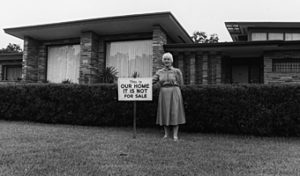 “Race, Income, and Ethnicity: Residential Change in a Houston Community, 1920-1970,” by Barry J. Kaplan discusses the changes that occurred in the Riverside, Riverside Terrace, and Washington Terrace neighborhoods with integration. The Houston Review, Winter 1981.
“Race, Income, and Ethnicity: Residential Change in a Houston Community, 1920-1970,” by Barry J. Kaplan discusses the changes that occurred in the Riverside, Riverside Terrace, and Washington Terrace neighborhoods with integration. The Houston Review, Winter 1981.
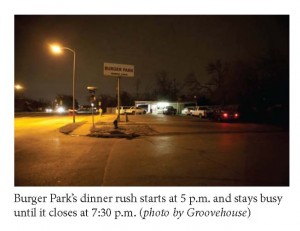 “Still Standing” by Katharine Shilcutt appeared in the Houston Press on January 13, 2011. This article looks at the transitions in the South Park neighborhood, “from a sheltered suburb to a crime-ridden war zone to a near wasteland” through the lens of the local Burger Park hamburger stand and the many residents who have lovingly called it home. Katharine Shilcutt no longer works for the Houston Press.
“Still Standing” by Katharine Shilcutt appeared in the Houston Press on January 13, 2011. This article looks at the transitions in the South Park neighborhood, “from a sheltered suburb to a crime-ridden war zone to a near wasteland” through the lens of the local Burger Park hamburger stand and the many residents who have lovingly called it home. Katharine Shilcutt no longer works for the Houston Press.
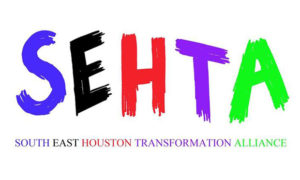
Visit the Southeast Houston Transformation Alliance website to learn more about the organization

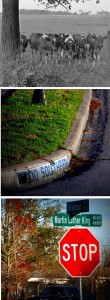
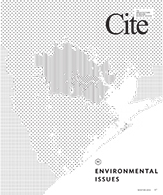 Raj Mankad wrote a telling article for Cite: The Architecture + Design Review of Houston, a quarterly publication of the Rice Design Alliance, about the toxic dumping that occurred in Southeast Houston in recent years. Click here to read, “Saving Grace: A Small Experiment by Two Architecture Students Led to a Big Struggle for Their Neighborhood.”
Raj Mankad wrote a telling article for Cite: The Architecture + Design Review of Houston, a quarterly publication of the Rice Design Alliance, about the toxic dumping that occurred in Southeast Houston in recent years. Click here to read, “Saving Grace: A Small Experiment by Two Architecture Students Led to a Big Struggle for Their Neighborhood.”  Follow
Follow